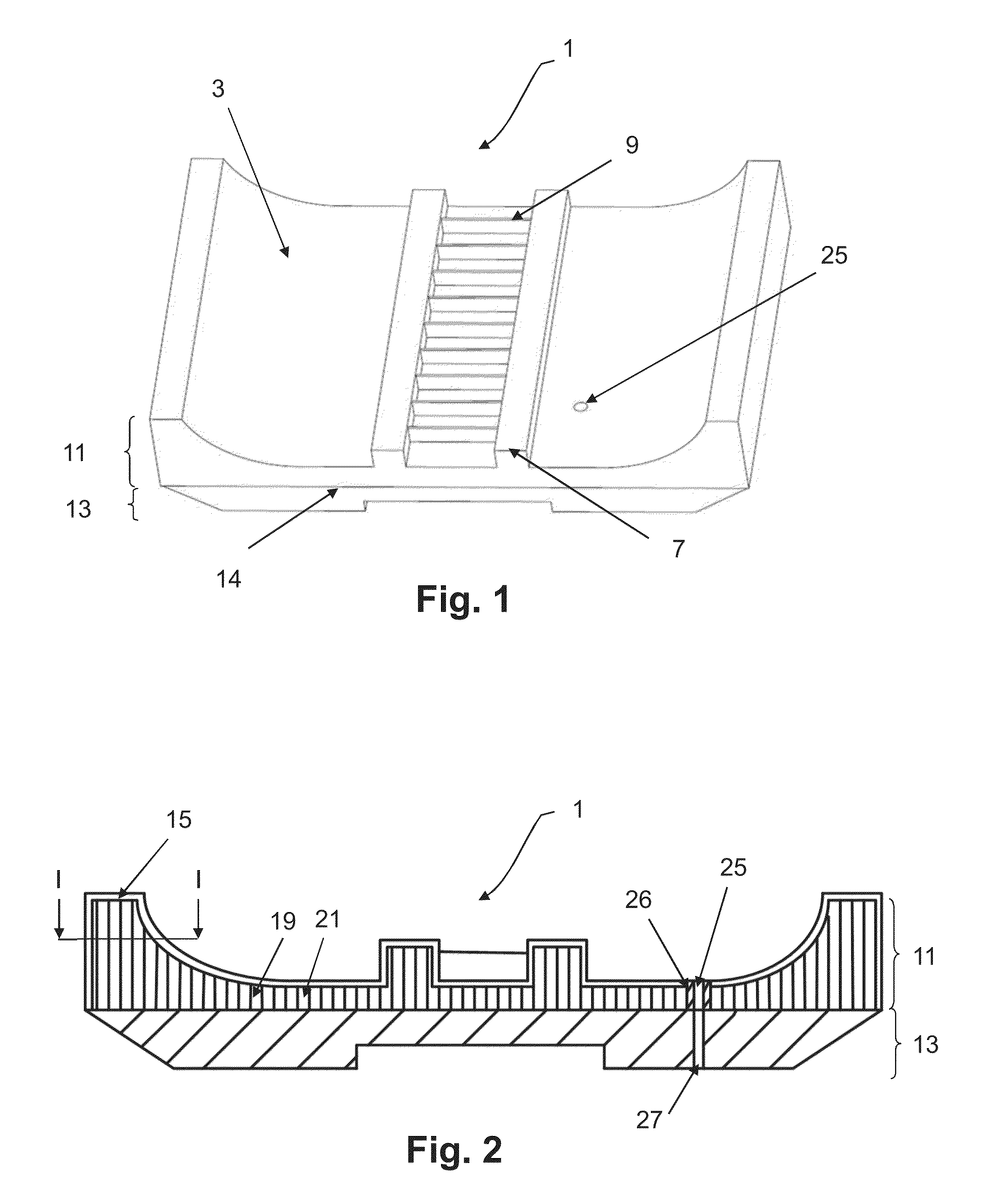Method for manufacturing a molding element by fritting with a completely planar unfritted portion, and corresponding molding element
a molding element and completely unfritted portion technology, applied in the direction of manufacturing tools, solvents, other domestic objects, etc., can solve the problems of stress after the object, deformation of the sintered object, and even more extensive deformation, so as to improve the distribution of the powder
- Summary
- Abstract
- Description
- Claims
- Application Information
AI Technical Summary
Benefits of technology
Problems solved by technology
Method used
Image
Examples
Embodiment Construction
[0043]In the following description, elements that are substantially identical or similar will be denoted by identical references.
[0044]In the present description, the invention is described for the instance in which the molding element is a block of a mold segment. However, it must be noted from the outset that the invention is not restricted to this particular embodiment and may notably be applied to instances in which the molding element is a protrusion, such as a blade or a strip, added on to the radially internal surface of a mold.
[0045]Likewise, the invention is described here for the case where the beam of energy used to sinter the powder is a laser beam. Of course, it is possible to use any other beam of energy, such as a beam of electrons.
[0046]FIG. 1 depicts a block, denoted by the overall reference 1, of a segmented mold intended for vulcanizing a tire.
[0047]The block 1 comprises a molding surface 3 able to mold part of the tread of the tire.
[0048]More specifically, the mo...
PUM
| Property | Measurement | Unit |
|---|---|---|
| width | aaaaa | aaaaa |
| thickness | aaaaa | aaaaa |
| thickness | aaaaa | aaaaa |
Abstract
Description
Claims
Application Information
 Login to View More
Login to View More - R&D
- Intellectual Property
- Life Sciences
- Materials
- Tech Scout
- Unparalleled Data Quality
- Higher Quality Content
- 60% Fewer Hallucinations
Browse by: Latest US Patents, China's latest patents, Technical Efficacy Thesaurus, Application Domain, Technology Topic, Popular Technical Reports.
© 2025 PatSnap. All rights reserved.Legal|Privacy policy|Modern Slavery Act Transparency Statement|Sitemap|About US| Contact US: help@patsnap.com



